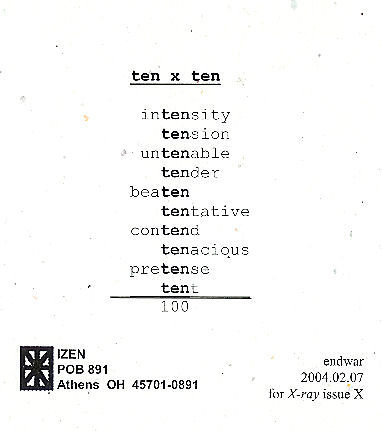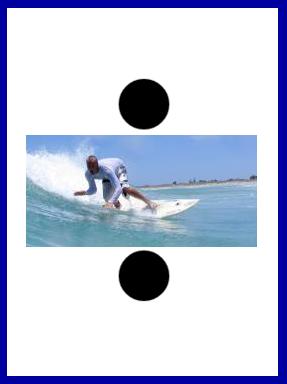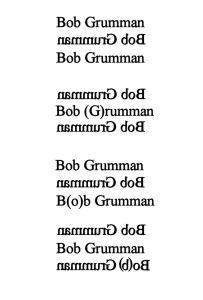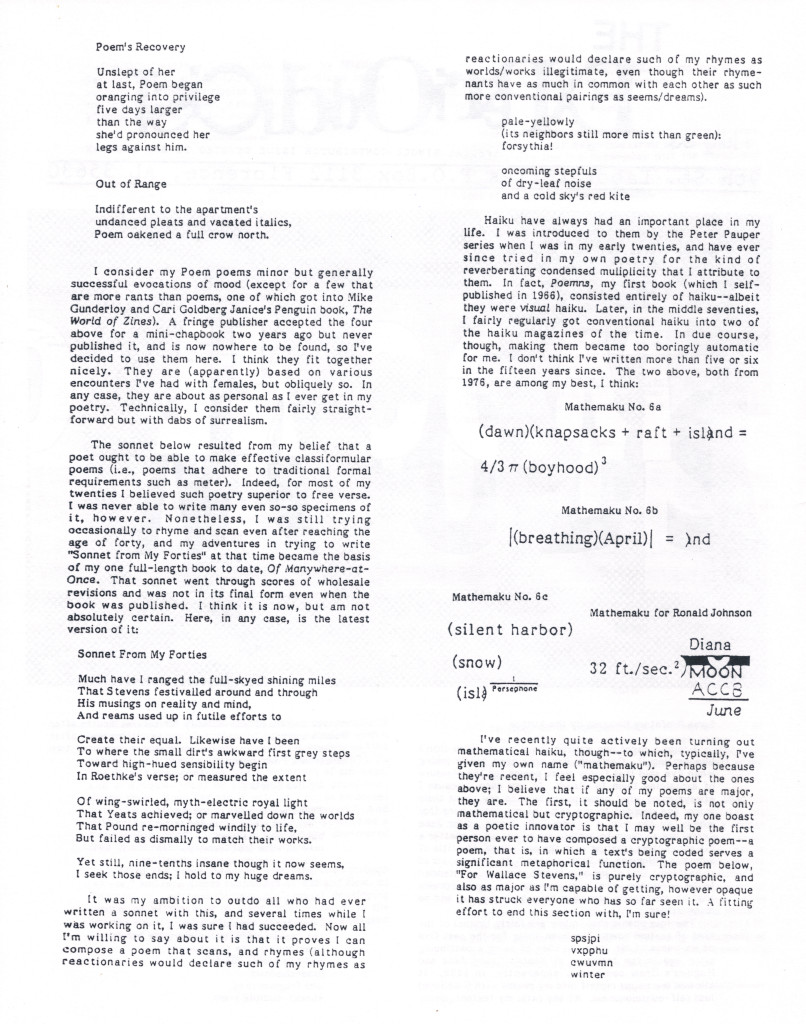Archive for the ‘minimalist poetry’ Category
Entry 1652 — 2 Laxian Repeater-Stack Poems
Friday, December 5th, 2014
I was having a great time commenting on an article in yesterday’s issue of the online magazine, Aeon, then pasting my comments, with further comments into this entry when my computer managed to lose one of my comments at Aeon and everything I had written here–in spite of my having remembered twice to save what I had here. So I’m in a sour mood now, and just posted a poem I just composed followed by Marton Koppany’s preliminary Hungarian translation not of it, but of my first draft of it:
.
Entry 1250 — Rejected Pwoermd
Saturday, October 26th, 2013
I was going to use the pwoermd, “mythstery,” inside the open letters of “the core of faereality,” which is the dividend of a set of long division poems I’ve been working on, but decided it was too frothily cute. But maybe not worthless? Anyway, here it is. And I’m outta here.
.
Entry 1205 — The Experioddicist, July 1993, P.2
Friday, September 6th, 2013
Entry 732 — Sloops
Tuesday, May 8th, 2012
sloops
I’m super-lethargic again, and this time nor willing to take a dose of APCs. That’s because I fear my body is too screwed up to meddle with pharmaceutically–any more than my doctors are already meddling that way with it. So just a word today–“spools” spelled backwards. It’s the longest word I’ve come up with so far that is a word in both directions. I bother publicizing it so I can pontificate a bit on my belief in the value of going conceptual as a poet. I would call the above a poem if printed “sloops spools.” But it would be an extremely trivial poem because amusing only; “god dog” is much better (putting aside how many times we’ve all seen it) because it has a conceptual interest: the fact that a dog can be considered the antithesis of a god. Hence, its backwards spelling is a metaphor for its “backwards” meaning. The images conveyed by the two spellings also interact more interestingly than the images conveyed by “sloops” and “spools” One set of words is amusing; the other amusing and interesting. Too many pwoermds and related poems are only amusing.
.
Enter 550 — Marton’s “Cursive” Again
Tuesday, November 1st, 2011
Marton got back to me about his “cursive” yesterday, giving me enough material for a full entry.
Entry 57 — Minimalist Poem Sequence by Endwar
Monday, December 28th, 2009
#699 through #715 of my old blog are all about the anthology of visio-textual art Crag Hill and I co-edited ten years or so ago, Writing To Be Seen. I do an entry on one piece by each of the contributors and a few miscellaneous ones. Rather than run them again here, I’m going to put them all together as an essay in the Pages section to the right. It’ll start off being a jumble but eventually will get organized, as with several still-disorganized pages.
To make this entry more than just an announcement, here is the sequence of minimalist permutational infraverbal poems (subverse, in his jargon, which I believe he got from his and my pal, Will Napoli) by Endwar that I featured in #716:
Oh, and a second announcement: today I began, and almost completed, my column for the next issue of Small Press Review. No big deal except that it’s a chore I’ve tried to get to every day for at least two months. I feared I’d never do it! Really. I hope my getting to it means I’ll start being at least slightly productive again. There’s so much I need to get done.
.
. add
. read
. a lie
. realize
. a verb
. reverb
. a mind
. remind
. a vision
. revision
. apt
. repeat
. a sign
. resign
. all
. real
.
Oh, and a second announcement: today I began, and almost completed, my column for the next issue of Small Press Review. No big deal except that it’s a chore I’ve tried to get to every day for at least two months. I feared I’d never do it! Really. I hope my getting to it means I’ll start being at least slightly productive again. There’s so much I need to get done.
Entry 48 — Full Effectiveness in Poetry
Saturday, December 19th, 2009
I’m skipping ahead to old blog entry #796 today to make a point about my recent cryptographiku. #796 has Cor van den Heuvel’s poem:
. tundra
I go on in the entry to say I believe Eugen Gomringer’s “Silencio,” of 1954, was the first poem to make consequential visiophorically expressive use of blank space:
. silencio silencio silencio . silencio silencio silencio . silencio silencio . silencio silencio silencio . silencio silencio silencio
I finish my brief commentary but then opining that van den Heuvel’s poem was the first to make an entire page expressive, the first to make full-scale negative space its most important element. Rather than surround a meaningful parcel of negative space like Gomringer’s masterpiece, it is surrounded by meaningful negative space. I’m certainly not saying it thus surpasses Gomringer’s poem; what it does is equal it in a new way.
I consider it historically important also for being, so far as I know, the first single word to succeed entirely by itself in being a poem of the first level.
Then there’s my poem from 1966:
. at his desk
. the boy,
. writing his way into b wjwje tfdsfu xpsme
This claim to be the first poem in the world to use coding to significant metaphorical effect. Anyone who has followed what I’ve said about “The Four Seasons” should have no trouble deciphering this. I consider it successful as a poem because I believe anyone reasonably skillful at cyrptographical games will be able (at some point if not on a first reading) to emotionally (and sensually) understand/appreciate the main things it’s doing and saying during one reading of it–i.e., read it normally to the coded part, then translate that while at the same time being aware of it as coded material and understanding and appreciating the metaphor its being coded allows.
I’ve decided “The Four Seasons” can’t work like that. It is a clever gadget but not an effective poem because I can’t see anyone being able to make a flowing reading through it and emotionally (and sensually) understanding/appreciating everything that’s going on in it and what all its meanings add up to, even after study and several readings. Being able to understand it the way I do in my explanation of it not enough. This is a lesson from the traditional haiku, which must be felt as experience, known reducticeptually (intellectually), too, but only unconsciously–at the time of reading it as a poem rather than as an object of critical scrutiny, which is just as valid a way to read it but different.
Entry 31 — Old Blog Entries 663 through 670
Wednesday, December 2nd, 2009
In #663, I presented my Odysseus Suite–but the reproduction is too crude for me to re-post it here. My next entry featured this, by Endwar:
 As I announced when I first posted this, I am hoping to publish an anthology of mathematical poems, like this one, so if you have one or know of one, send me a copy of it, or tell me about it.
As I announced when I first posted this, I am hoping to publish an anthology of mathematical poems, like this one, so if you have one or know of one, send me a copy of it, or tell me about it.
#665 had this by Marton Koppany, which I have to post here because it was dedicated to ME:

Hey, it’s mathematical, too. The next entry, whose number I fear to state, concerned this:

This is from Typewriter Poems, an anthology published by Something Else Press and Second Aeon back in 1972. It’s by Alison Bielski, An English woman born in 1925 whose work I’m unfamiliar with. I find this specimen a charmer . . . but am not sure what to make of it. Three lines, as in the classic haiku. The middle one is some sort of filter. Is “n” the “n” in so much mathematics? If so, what’s the poem saying? And where does the night and stars Hard for me not to assume come in? Pure mathematics below, a sort of practical mathematics above? That idea would work better for me if the n’s were in the lower group rather than in the other. Rather reluctantly, I have to conclude the poem is just a texteme design. I hope someone more clever sets me right, though. (I’m pretty sure I’ve seen later visio-textual works using the same filter idea–or whatever the the combination of +’s. =’s and n’s is, but can’t remember any details.)
It was back to my lifelong search for a word meaning “partaker of artwork” in #667–but I now believe “aesthimbiber,” which I thought of in a post earlier than #667, I believe, but dropped, may be the winner of my search.
Next entry topic was about what visual poets might do to capture a bigger audience. I said nothing worth reposting on a topic going nowhere because visual poets, in general, are downright inimical to doing anything as base as trying to increase their audience. One suggestion I had was to post canonical poems along with visual poems inspired by them, which I mention because in my next entry, I did just that, posting a Wordsworth sonnet and a visual poem I did based on and quoting part of it–and don’t re-post here because of space limitations. I wrote about the two in the final entry in this set of ten old blog entries.
Entry 30 — Discussion of a Short Poem
Tuesday, December 1st, 2009
.
.
. JOE
.
.
. JOE
.
.
The poem above is by Robert Grenier. I quoted it in #661, with some words of Ron Silliman’s about it. Then in #662, I weighed in about it with much the same discussion that follows. During that discussion, I mentioned a weak parody of it by David Graham that charmed the other stasguards at New-Poetry, none of whom has much sensitivity to minimalistic poetry.
To write an effective parody, you have to understand the text, or kind of text, you are parodying, and Graham understood only the surface of this one–the fact that it consists of two words. His parody of the poem consisted of the single letter, O. It is a parody within a parody of Silliman’s text, though. This is somewhat better because he pretty much just repeats what Silliman said about “JOE,” but applied to “O.” He got one minor thing right: by raving about the O as also a zero, he indicated that he’s somehow learned that one frequently employed technique of minimalist poems is visual punning, or a text whose visual appearance can be interpreted as two different words, or the equivalent, that do not sound the same. But he didn’t demonstrate he really knew anything about minimalist poetry or about “JOE.”
Here’s what Silliman said about it: “One could hardly find, or even imagine, a simpler text, yet it undermines everything people know or, worse, have learned, about titles, repetition, rhyme, naming, immanence. If we read it as challenging the status of the title, then on a second level it is the most completely rhymed poem conceivable. & vice versa.
As language, this is actually quite beautiful in a plainspoken manner, the two words hovering without ever resolving into a static balance, never fully title & text, nor call & response, neither the hierarchy of naming nor parataxis of rhyme.”
I have a confession to make: I said in #661 that “It sounds like Grenier’s work . . . which surely is a point in its favor–that is, despite being minimalist, and–in the view of stasguards–worthless, there’s something about it that makes it recognizable as a particular poet’s.” It is by Robert Grenier, but my recognition of it as his wasn’t as close to being a point in its favor as I said. I not only had seen it before, but recently more or less studied it, for it was among the poems from Grenier’s Sentences that Silliman had in In the American Treethat I carefully read over and quoted parts of in an essay I’d been working on. I probably had read about it in Silliman’s blog, too. As well as read it years ago when I first got Silliman’s anthology.
I still claim my recognition of who composed the poem is evidence that there’s something to it, something identifiably unique to its author, which a poem of no value at all would not likely have. Otherwise, I probably wouldn’t have connected it to any particular poet.
I must confess, too, that I now remember not thinking much of “JOE” when I first saw it. Indeed, my reaction to it wasn’t much different from that of the stasguards. However, annoyed by their ignorant dismissal of it, I reflected on it more. It hasn’t become a super favorite of mine, but I now perceive its virtues.
Silliman’s comments helped me, although I also thought little of them, too, at first–I thought he liked the poem for the wrong reasons. I still have major differences with what Silliman says, but no longer feel he’s so much wrong as simply not coming at the poem from the slant I am.
My main problem with what he said was that I didn’t see the first “Joe” as a title. According to the look of the poem in the Silliman anthology, though, it would seem to be a title. There, it is among a sequence of poems excerpted from Sentences with a little row of asterisks between each poem. Most of the poems start with a short line of word without caps, but every once in a while one of them has an all-capital word above the rest of its text that seems to be a title. While I would never agree that the poem therefore “undermines everything people know or, worse, have learned, about titles,” I agree that the first “JOE” is a title–and maybe the second is, too. Grenier treats his title more interestingly than most poets treat theirs, but where does he under- mine the notion that a poem’s title tells you what it’s about, or anything much else about titles? Silliman ought to have spelled out just what he thinks titles are, and how Grenier undermines everything people know about them.
I reject Silliman’s assertion that Grenier’s text “undermines everything people know or, worse, have learned, about . . . repetition, rhyme, naming, immanence.” That it rhymes is nonsense. If it did, then substituting “Gwendolyn” for “Joe” would result in a much greater rhyme than Joe/Joe is.) That it repeats, and that that is the source of its effect is clear, but I can’t see that it is undermining any view of repetition I, for one, have ever had. What it does is make more poetic use of repetition than a poem by anyone I know of since Stein told us what a rose is. Grenier names like anyone else, too. No undermining there. Immanence may be a different story. Silliman uses the word a lot, but I haven’t read him enough sufficiently to know what he means by it as a critic nor do I have time now to find out, so I’ll ignore it, for now.
Silliman is a revolutionary whereas I’m an aesthete. So he sees under- mining that he’d probably term political where I see poetic creativity. He finds this poem to “challeng(e) the status of the title”; I don’t. I suppose you could say, as he does, that the poem sounds good–“Joe” contains the euphonious long o, and j-words apparently are feel good to say for the English-speaking. It’s not hard to pronounce but it allows one to use a lot of one’s pronouncing equipment. Hints of “joy” may accompany “Joe,” too, particularly when unexpectedly repeated, with nothing after it, to give a mind lots of space to find such things as “joy” near it. I wouldn’t term it especially beautiful, though. Finally, to finish comparing my thoughts on the poem to what Silliman said about it, I wouldn’t describe the two instances of “Joe” as hoveringly avoiding “a static balance” between the opposites he names, but that’s probably only a vocabulary difference between us.
Now, because the stasguards at New-Poetry mocked minimalist poetry in general as well as Grenier’s poem, I feel I ought to say some words in defense of minimalism. Minimalism in art has to do with focusing on details that are generally lost in larger complexities in both art and existence but which produce aesthetic pleasure once properly attended to. A painting that’s nothing but two colors, for example, will minimalistically force a viewer not superior to such things into the purity of color against color–and out of whatever the colors involved are secondary qualities of. A painting in one color only will make the viewer attend to the brushstrokes and or the texture of the canvas or its equivalent. Which may be a bore, but may also be startling interesting.
A minimalist work is nearly always more than it seems. That is, it nearly always includes its usually ignored context–as a painting or poem. A minimalist painting needs its frame or its location on a wall or in a book or the like for it to be questioned, then recognized, as an artwork; a minimalist poem needs its page and, perhaps, its book. I know I’m expressing myself sloppily, and I’m tiring, so I’ll go to “Joe,” which should make what I’m saying clearer.
The poem is just two words without its being in a book of poetry. Located there, however, the reader has to ask what it is, and assume it’s intended to be a poem. It’s about someone named Joe, presumably, but the only information about him it provides is . . . his name, repeated. Since it’s a poem, the repeated name must be saying something poetic about Joe. A background in poetry should readily provide a clue–once the reader softens enough to accept that the poem is telling him something, is saying that the text, “Joe,” is a poem about Joe. And that it is also admitting that that is all it can say about him. A reader with a background in poetry should soon remember the theme much-used in poetry of something’s being beyond the power of words to express. Joe? What can I say about him? He’s just . . . Joe. (Joe is a Joe is a Joe.)
A poem all of the text but one word of which is invisible.
To this the unconventionality of the poem should add under-images like the word, “joy,” I mentioned earlier. The reader can’t flow unreflectingly into amplification; he is arrested in the full semantic value, whatever it is, of “JOE.” The caps add “titledness” to the image of Joe–he is thus a kind of poem. The caps also underscore his being too large for words.
Among the poem’s other minimalistically realized (mostly visceral) meanings is how hugely, and finally, significant names can be. It might be said that, among much else, the poem is a tribute to titling. But it is finally most massively about the magnitude of a simple human being, something that two O’s as a poem ignore (as such a poem ignores the difference in expectedness–in a poem–between a repeated O and a repeated name–of a person already named). Which, to get back to the attempt at a parody I began my discussion, is why Graham’s is close to worthless–for anyone with the ability and background to appreciate minimalism.



